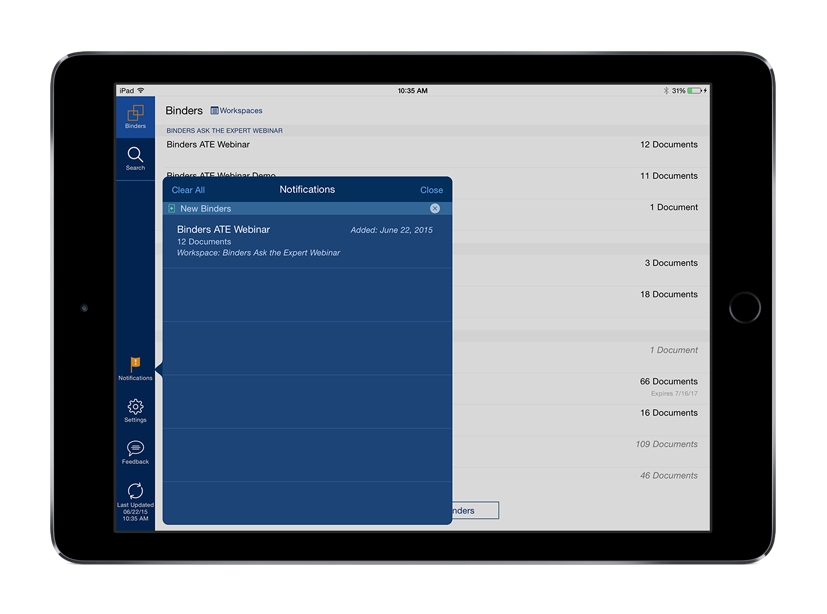e-Discovery is an eye-opening phase of litigation. Though challenging, it’s where you and your team will dig into the details of your case, uncover critical information, and start building your strategy for the courtroom.
As a litigator, it’s critical to maintain constant insight into your case throughout its lifecycle—but unrealistic to perform the review yourself. How do you strike the right balance to stay plugged in, guide decision-making for reviewers, and strategize early without slowing down your day or your team’s workflows?
To start, establish these touchpoints with your litigation support team.
Touchpoint #1: Receive potentially hot documents as they’re discovered.
In a world of explosive data volumes and endless data types, you know that much of what goes through review will be junk. Mark it as non-responsive and it’ll fall off your plate. But just as you think you are looking at a batch of irrelevant docs, something remarkable might appear—sometimes, it could make or break your case.
In may seem obvious, but we can't stress enough the importance of letting your litigation support team know that you want to see every document that could be considered hot as soon as it appears. That way, you’ll prioritize diving into critical case information—instead of waiting for a weekly progress report.
Ideally, you’ll access these documents electronically. That way, your feedback is shared quickly, and you can make recommendations for any necessary review shifts immediately. In Relativity, this is easy to do with Binders. The mobile app—accessible via your tablet or desktop—securely syncs your notes with your core environment and makes them easily shareable via email.
Touchpoint #2: Open the dialogue on questionable documents and topics.
Just like hot documents, confusing data may arise as review progresses. Maybe a responsive email includes a recipient whose name the team doesn’t recognize, and they’re wondering about investigating that person as an unanticipated custodian. Or perhaps a responsive report showing financial trends outside the date range of your case might change the scope of the review.
Maintain a close relationship with your litigation support lead so you can keep each other updated. They can bring questions from the review team to you, and you can convey potential shifts in the case or topics about which your client has expressed concerns or confusion. By keeping this communication open and constant—in person or electronically—between a couple of key point people on the project, you’ll avoid some of the runaround often involved in making unexpected changes midstream.
Touchpoint #3: Build a repository of critical documents incrementally for better witness prep.
 As you build your knowledge of the case and receive document notifications from your litigation support team, ask them to keep a running folder or binder of these documents for you; check it often as you’re strategizing, and let them know when documents should be added or removed based on what you learn along the way. In Relativity Binders, for example, you can receive updated groups of documents quickly and securely, navigating and annotating them easily.
As you build your knowledge of the case and receive document notifications from your litigation support team, ask them to keep a running folder or binder of these documents for you; check it often as you’re strategizing, and let them know when documents should be added or removed based on what you learn along the way. In Relativity Binders, for example, you can receive updated groups of documents quickly and securely, navigating and annotating them easily.
All of this is a huge benefit when you’re prepping witnesses. As you sit down with them for interviews, perform dry runs of their testimony, and loop them into prep for trial, you can take notes from your discussion in the moment on a mobile device or laptop, have them securely backed up in your core environment, and be ready to send your case team any new information before the conversation is even over.
Touchpoint #4: Add context to your data after depositions.
 Update your litigation support and review team after case developments, such as changes to relevant date ranges or the custodian list. With any major developments revealed during a deposition, share significant changes of course. Either way, don’t let a sticky communications workflow with your team slow down the implementation of these changes. Capture your thoughts in context for your review team and share them right away.
Update your litigation support and review team after case developments, such as changes to relevant date ranges or the custodian list. With any major developments revealed during a deposition, share significant changes of course. Either way, don’t let a sticky communications workflow with your team slow down the implementation of these changes. Capture your thoughts in context for your review team and share them right away.
By maintaining close contact with your litigation support team and influencing review strategy in real time, you’ll experience a more cost-effective and efficient e-discovery process.










